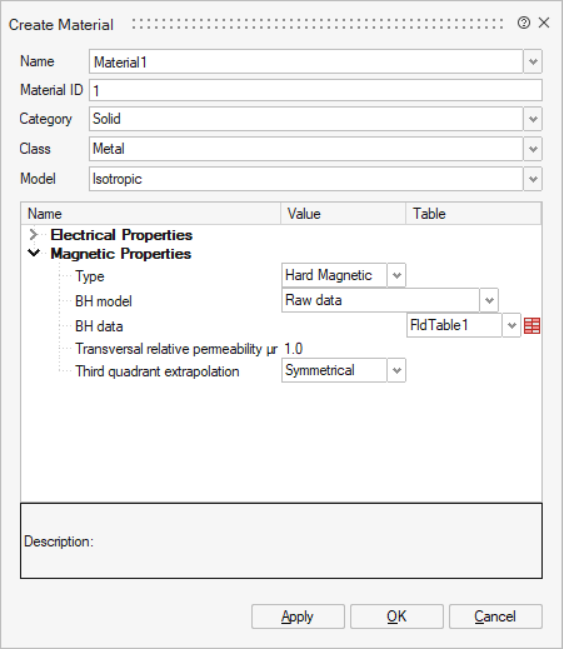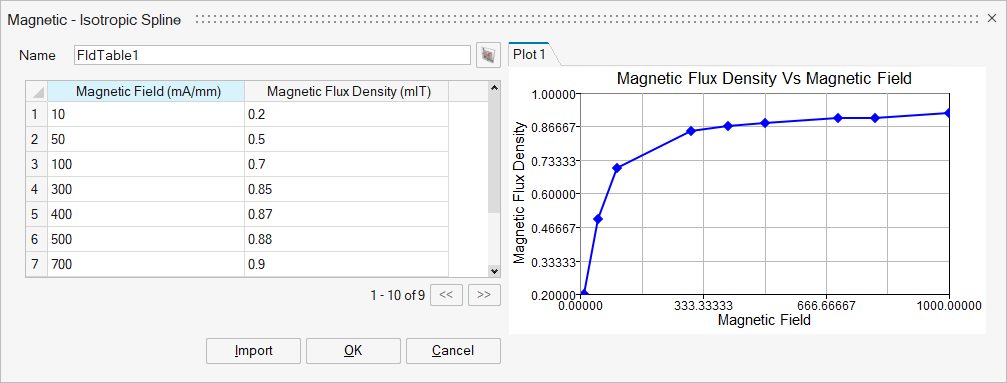B(H) law: Raw data hard magnetic material
Presentation
This model (Nonlinear magnet described by a spline) defines a magnet with a nonlinear B(H)) characteristic starting from experimental B, H values. The definition of the B(H) behavior law with this model is a little longer than with the analytic models, but the experimental curve is modeled more accurately.
This magnet model is noted as unidirectional because the mathematical model and the direction of magnetization are dissociated. B and H values entered in the dialog box define the demagnetization curve, while the direction of magnetization is defined by the orientation in the region.
Mathematical model
In the direction of magnetization the model is constructed in the following manner:
- entry of experimental B, H values (Limitations for the experimental data)
- linear interpolation between these points with a linear extrapolation beyond the last one
An example of the B(H) dependence in the direction of magnetization is given in the figure below:
In transversal directions , one can write:
B⊥(H)= μ0μr⊥H⊥
where μr⊥ is the transverse relative permeability
Limitations for the experimental data
The user is advised to use the following steps for the input of the experimental data:
- The first point of the spline curve must have a combination of H < 0 and B = 0 (-HcB in the picture).
- The H values of the spline curve must be purely increasing.
- The user must input at least four values of (H, B).
Direction of magnetization
The direction of permanent magnet magnetization is “dissociated” from the model. In the software, it is defined separately.
The various possibilities available to the user are shown in the table below. (The basic plane is a plane XOY.)
|
|
|
|
|
|
| Unidirectional |
Radial positive |
Radial negative |
Orthoradial positive | Orthoradial negative |
Dialog Box

- Open a Create Material dialog box in menu
- Choose Solid as Category field
- Choose Metal as Class field
- In Magnetic Properties:
- Choose Hard Magnetic type
- Choose Raw data BH model
- Define a table by couple of Magnetic
Field / Magnetic Flux Density by
clicking on:


- Choose the Model in third quadrant (Linear or Symmetrical)